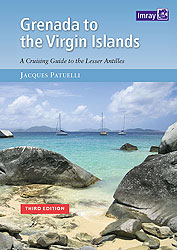| |
|

Where to stay and what to see
The reef-girt island has an exceptional underwater world and the absence of mountains gives it an admirably dry climate. Its indented coast has incomparable beaches that, as the publicity blurb will tell you, are 365- strong, ‘one for every day of the year’.  Major investment groups, mainly North American, have built luxurious hotel complexes around the coast, with golden-white sand beaches to seaward and green golf courses inland. But in Antigua another sport is played on turf: cricket. It’s a national institution to boot. The rest of the island’s tourist infrastructure is on a simpler scale with small cottages for rent, mainly round St John’s. The local restaurants focus on grills and seafood. Antigua’s tourist jewel, however, has to be yachting, concentrated around the superb site of English Harbour with the famous Antigua Week regatta as its focus. Finally, there’s no doubt that Antigua benefits from an international airport linking it to Europe and North America. Major investment groups, mainly North American, have built luxurious hotel complexes around the coast, with golden-white sand beaches to seaward and green golf courses inland. But in Antigua another sport is played on turf: cricket. It’s a national institution to boot. The rest of the island’s tourist infrastructure is on a simpler scale with small cottages for rent, mainly round St John’s. The local restaurants focus on grills and seafood. Antigua’s tourist jewel, however, has to be yachting, concentrated around the superb site of English Harbour with the famous Antigua Week regatta as its focus. Finally, there’s no doubt that Antigua benefits from an international airport linking it to Europe and North America.

English Harbour
Nelson’s lair is unquestionably the bestknown spot in Antigua. The port and dockyard installations (Nelson’s Dockyard), built between 1725 and 1746, were abandoned by the Royal Navy in 1889. In the 1950s a retired British naval officer, Captain Nicholson, was behind the first moves to restore the place. Since then his pioneering work has been followed up by the Nelson’s Dockyard National Park. The result is that today the main buildings, such as the Admiral’s House (now the museum) the old workshops, the stables and the officers quarters, have been restored. The whole represents an extremely rare example of the historic architecture of the Lesser Antilles, with its stone and brick structures topped with shingles.
|
|
|
|

You’ll see a line of stone pillars, the last remains of the old Boat House and Sail Loft, close to the Admiral’s Inn. This luxurious hotel and restaurant has been created from the elegantly restored 18th century workshops. Close to the old Admiral’s House, now the home of the museum, are the equally sumptuous premises of the Copper and Lumber Store Hotel. Tourists and yachtsmen of more modest means generally frequent the Mainbrace Pub next door. In the evening the pubs and bars are often full of the merry noise of rollicking crew. It’s an amazing contrast to the ambience of quiet luxury you find in some of the restaurants never sullied with the polyphonic and metallic percussion of a steel band.
South of the buildings a footpath leads to Fort Berkeley (1705-12) where a single cannon still symbolizes the once inviolable English Harbour. From this excellent viewpoint you can look down on the quays of Nelson’s Dockyard where, in the first weeks of April, the loveliest cruising and racing yachts gather for Antigua Race Week. To the east on the opposite side of the entrance are the imposing fortifications of Shirley Heights (Fort Shirley Battery, 1787), which dominate the sea approaches. Below them, invisible on the hillside behind lie the old barracks of the Royal Artillery. From them there’s a magnificent view and, on a clear day, you can see Guadeloupe.
At the Sunday evening barbecue party in the restaurant high in the battery, there’s no shortage of fans of wild reggae music.
If English Harbour is the centre of this extensive zone focussed on yachts, Falmouth Harbour and village next door are its western annexe.
For more details on Antigua, it's capital St John, and the visit of the island,

|
|
|










